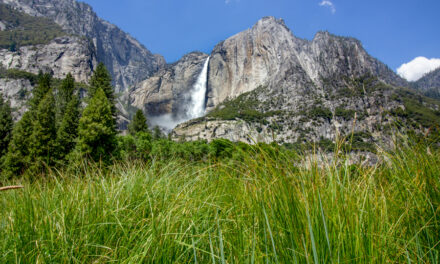This is part two on a series that I’ve been writing about on rattlesnakes. On this topic, I’m going to be writing about things you can do as a hiker if you or someone you know is bit by rattlesnake. I’m also going to be sharing with you what kind of treatment you can expect once you’re in the hospital.
Summing Up What Happens When You’re Bit By A Rattlesnake
In part one of this series, I wrote about what you can expect to happen to your body if you’re a hiker and bit by a rattlesnake. Sometimes people will have dry bites where no venom is injected into the tissue. For when venom is injected, symptoms can be mild and only include swelling, redness, and pain. More serious problems can lead to compartment syndrome, rhabdomyolysis, neurological impairment, generalized pain, nausea, vomiting, breathing difficulty, and even death. For a more detailed description on what to look out for after a rattlesnake bite, I strongly advise you to check out this article here: What Happens To Your Body When Bit By A Rattlesnake.
What To Do When Bit By A Rattlesnake While Hiking
First and foremost, get away from the snake so you don’t get struck again. If you’re with someone or have cell phone service, figure out the best way to get to the nearest emergency room. Second, although stressful, try to remain calm. Anxiety can make symptoms worse.
What To Do In The Field If You’re Bit By A Rattlesnake
- Immobilize the extremity of the heart: Initially, immobilizing the injured extremity can be beneficial. Once seen by a provider, let them guide how to position the extremity. Placing the extremity below the level of the heart can increase the risk of further injury near the bite site because it reduces toxins from spreading. However, raising the extremity above the level of the heart can increase venom absorption to the rest of the body. For those people who aren’t showing whole body complications from the toxins, it may be more beneficial to keep the extremity raised above the level of the heart.
- Remove any rings, watches, or restrictive clothing from the affected extremity: Toxins can produce swelling and any tight objects can cut off circulation to the area.
- Cleanse the wound as best as possible: it’s always a good idea to take some sort of first aid kit with you when hiking.
- Go to the nearest emergency room as soon as possible.
- If possible (and only safe to do so without delaying transport to a hospital), take a photo to identify the snake.
Things To Avoid After Being Bit By A Rattlesnake While Hiking
- Do not apply pressure, tourniquets, or constrictive dressings to the area: these objects can damage nerves, tendons, and blood vessels.
- Do not try to suck out the venom with your mouth: this can increase the risk of infection. Also, not much venom is actually removed to be of any benefit.
- Do not apply pressure: Although pressure is recommended by the American Heart Association, no studies actually support this theory for rattlesnake bites.
What To Expect In The ER
Once in the emergency room you can expect to get a detailed and full workup. Here’s what to expect:
- A complete blood workup to check for any major abnormalities including any complications.
- Urine test
- EKG to check for any heart rhythm abnormalities
- Antibiotics may or may not be given depending on whether the provider believes you have an infection. Antibiotics are only recommended if you actually have an infection and not recommended to be given to prevent one. Infections from rattlesnake bites are very rare.
- Tetanus vaccine if you’re not up to date in having one in the last ten years.
- Wound measurement: frequent measurements of swelling and redness to check for worsening symptoms or envenomation will be done by the nursing staff.
- Antivenom administration: CroFab is the common treatment of snake bites by rattlesnakes in the United States. This medication is the mainstay treatment for significant reactions to rattlesnake bites. CroFab helps to counteract the snake bite venom.
Summing Up What Hikers Need To Know About Being Bit By Rattlesnakes
Being bit by a rattlesnake can be a very nerve-wracking and life threatening experience. Please take into consideration the field to help prevent complications. Remember, getting to a hospital is the most important thing you can do as soon as possible after being bit by a rattlesnake. In my next and final article on rattlesnake bites, I’ll be giving tips on how to avoid being bit by a rattlesnake. If you have ever been bitten by a rattlesnake, please leave a comment below. I’d love to hear about your real life experience.
Sources:
Seifert, S. MD, FAACT, FACMT. “Evaluation and Management of Crotalinae (Rattlesnake, Water Moccasin [Cottonmouth], or Copperhead) Bites In The United States.” UptoDate. February 2017. Web. 31 March 2018.





